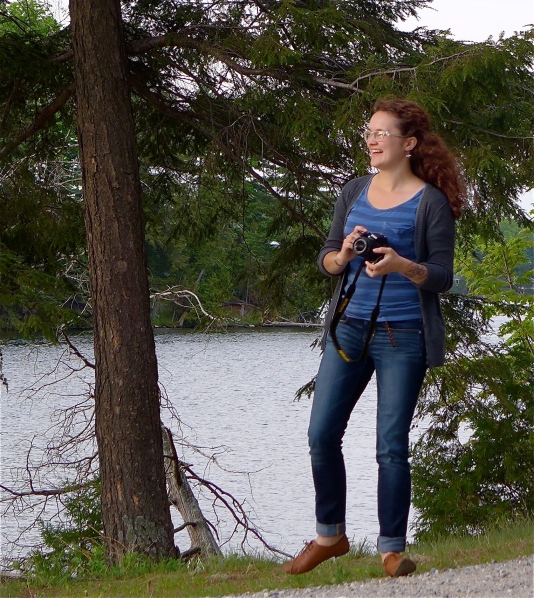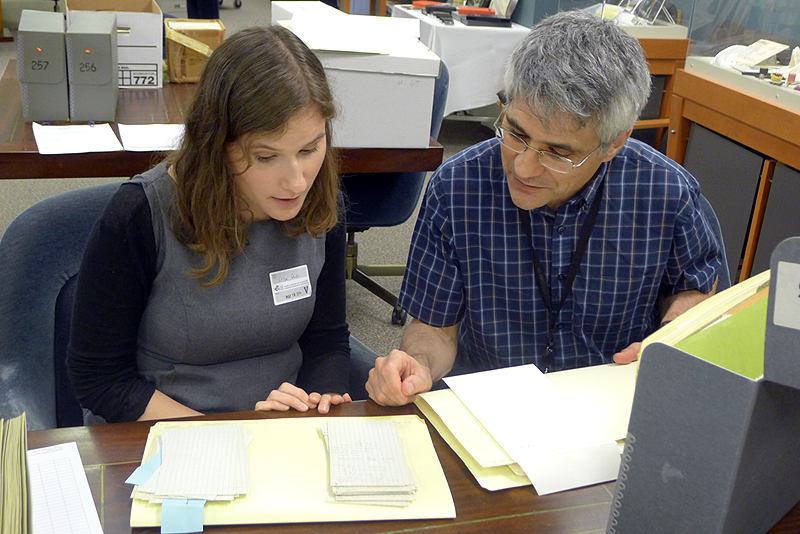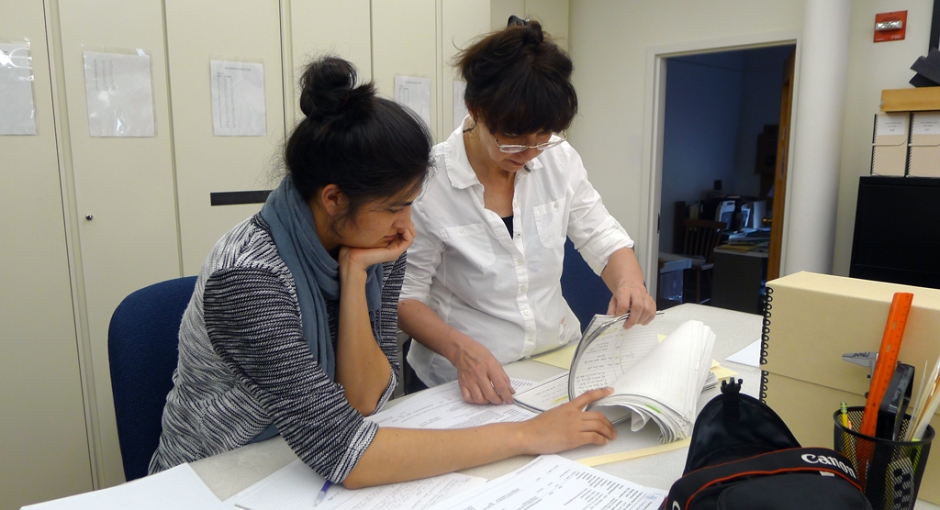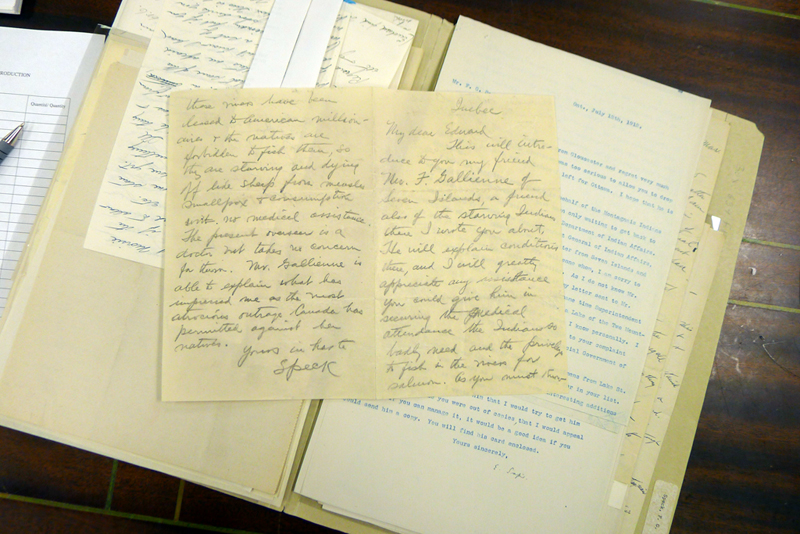My name is Sarah Parkinson. I decided I wanted to major in Cultural Anthropology as soon as I began my undergraduate studies at Penn. Since then I have been trying my best to take advantage of the resources that have been provided by the university professors and museum to get as much experience in the field as possible. Last summer I worked as a student curator for an exhibit in the Penn Museum, which led to a work study position in the American section collections. Through this introduction to museum work, I grew more interested in the stories that museum collections can tell and the ways in which museums come to understand these stories. Studying wampum, for me, is a fantastic case study in this museum process.
Compelling stories can be hidden on dusty museum shelves between archaeological fragments and ethnographic specimens, waiting to be heard. Deeper understandings of museum collections are not usually immediately evident when one looks at an object, or even when one looks through documents in museums which are too often sparsely populated with accurate information. Often, unearthing an object’s story involves working closely with it, inspecting its details to see what they reveal, and connecting these small insights in a way that makes sense. Wampum interests me in that its stories are hidden within its minute details, between the warps and wefts, in the beads and in the archives. The possibility of finding new stories about wampum, new understandings, excites me.
In this project, I am especially interested in glass bead wampum and how it differs from more “traditional” shell bead wampum. Although glass has been labeled as insignificant by some scholars and museums, there is evidence that suggests it t is in fact culturally significant. In addition to researching materiality, I want to explore the way museums curate glass beads as compared to shell beads, and the consequences that this may have on the understanding of glass wampum.
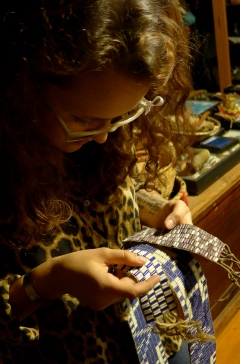
Examining wampum reproductions made with glass and clay beads at Mark Humpal’s shop in New Hampshire.
I began my work on this project by transcribing recordings from last summer’s field research. The object analyses are, of course, important in this research, but what inspired me most was hearing the way Native people talked about the belts. Finding the truth about these belts matters, because it is inextricably connected to the stories that many living communities tell about themselves.
Publications:
• July 14, 2015. “Of Words and Matter: Glass Wampum.” In Beyond the Gallery Walls. University of Pennsylvania Museum of Archaeology and Anthropology, Philadelphia, PA.
• May 27, 2015. “Sound and Motion in Museum Objects: Cherokee Stomp Dance Ankle Band Rattles.” Object Analysis and Report for Anthropology of Museums class, in Beyond the Gallery Walls. University of Pennsylvania Museum of Archaeology and Anthropology, Philadelphia, PA.
• May 26, 2015. “On the Rail to the Wampum Trail.” In Beyond the Gallery Walls. University of Pennsylvania Museum of Archaeology and Anthropology, Philadelphia, PA.
• April 30, 2015. “Searching for Stories: Patiently Listening to an Iñupiaq Pipe.” Object Analysis and Report for Anthropology of Museums class, in Beyond the Gallery Walls. University of Pennsylvania Museum of Archaeology and Anthropology, Philadelphia, PA.
